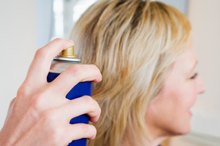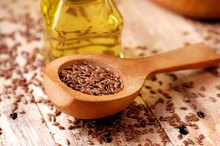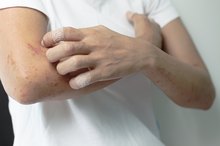What does fact checked mean?
At Healthfully, we strive to deliver objective content that is accurate and up-to-date. Our team periodically reviews articles in order to ensure content quality. The sources cited below consist of evidence from peer-reviewed journals, prominent medical organizations, academic associations, and government data.
The information contained on this site is for informational purposes only, and should not be used as a substitute for the advice of a professional health care provider. Please check with the appropriate physician regarding health questions and concerns. Although we strive to deliver accurate and up-to-date information, no guarantee to that effect is made.
Allergies to Cocoa Butter Lotions
Allergy to cocoa butter lotion is known as allergic contact dermatitis, or skin inflammation that results from an allergic reaction after contact with a particular substance 5. This skin condition is commonly a result of an allergy to substances such as nickel, poison ivy and fragrances 58.
If you are experiencing serious medical symptoms, seek emergency treatment immediately.
Effects
When cocoa butter lotion is applied to the skin, the immune system reacts and produces a cascade of inflammatory chemicals that result in a skin reaction 48 to 72 hours within an application of the cocoa butter. The next time the lotion is applied, the immune system is able to react more quickly and the reaction tends to occur in less time. Symptoms may not occur with the first application and in some cases a product can be used for years prior to developing an allergy 5. Once the allergy develops, however, symptoms will be present every time the lotion is used 5.
Symptoms
Allergies to Hairspray
Learn More
Symptoms of an allergy to cocoa butter lotion include a skin rash where the lotion made contact with skin 5. This rash may appear as red skin with little bumps and often presents with severe itching. Red, dry patches may be present and blistering can occur. This rash is often painful, and in severe cases can feel like a burn. The more contact an area of skin had with the lotion, the more likely that area will be severely affected.
- Symptoms of an allergy to cocoa butter lotion include a skin rash where the lotion made contact with skin 5.
- This rash is often painful, and in severe cases can feel like a burn.
Diagnosis
A dermatologist or allergist can diagnose an allergy to cocoa butter lotion by taking a careful health history 5. A patch test can assist in the diagnosis. This procedure involves placing a small amount of the suspected allergen on the skin and leaving the allergen on the skin for the next two days. The physician examines the skin for a reaction following a 48-hour period.
- A dermatologist or allergist can diagnose an allergy to cocoa butter lotion by taking a careful health history 5.
- The physician examines the skin for a reaction following a 48-hour period.
Treatment
Can Milk Thistle Cause Skin Rashes?
Learn More
The primary treatment includes avoidance of cocoa butter lotion. For symptom relief, topical steroids can reduce inflammation. Antihistamines such as benadryl helps relieve intense itching. For severe cases, oral corticosteroids may be prescribed to decrease inflammation. Finally, antibiotic cream or oral antibiotics should be used if there is any concern that the affected area is infected, according to the website May Clinic.
- The primary treatment includes avoidance of cocoa butter lotion.
- For severe cases, oral corticosteroids may be prescribed to decrease inflammation.
Considerations
Once an allergy to cocoa butter lotion is diagnosed, it is important to review the labels of any other lotions or fragrances 5. There are often fragrances or additives other than cocoa butter in cocoa butter lotion and these additives can be present in other products and should be avoided 4.
Related Articles
References
- Avoid food and drug interactions. (n.d.).
- Chinthrajah RS, et al. (2015) Diagnosis of food allergy. DOI:
- Dark chocolate and milk allergies. (2017).
- FAQ: Products that can be made from cocoa. (2003).
- Food allergy. (n.d.).
- Food allergy facts and statistics for the U.S. (n.d.).
- Mayo Clinic Staff. (2017). Food allergy.
- Nickel allergy. (n.d.).
- Product review: dark chocolate, cocoa powder, nibs, extracts and supplements – sources of flavonols. (2018).
- Vojdani A, et al. (2013). Cross-reaction between gliadin and different food and tissue antigens. DOI:
Writer Bio
Rebecca Chancellor is a physician in North Carolina with experience in journalism since 1996. She has been published in several scientific journals including the "Journal of Clinical Oncology" and "Stroke." Chancellor has a Bachelor of Arts in biology from Swarthmore College and a Doctor of Medicine from the University of Maryland School of Medicine.









